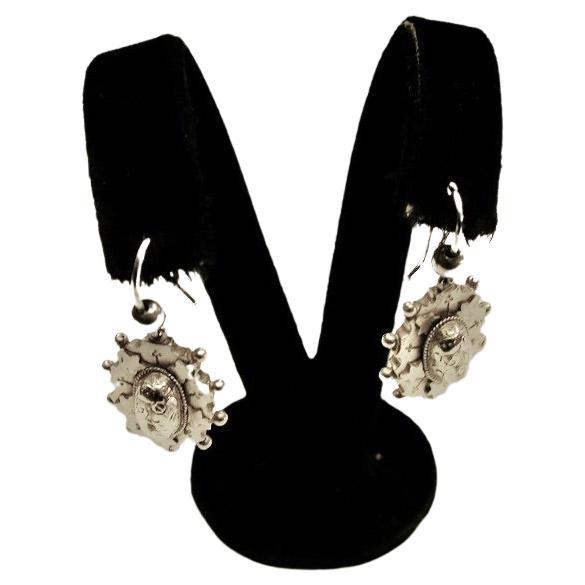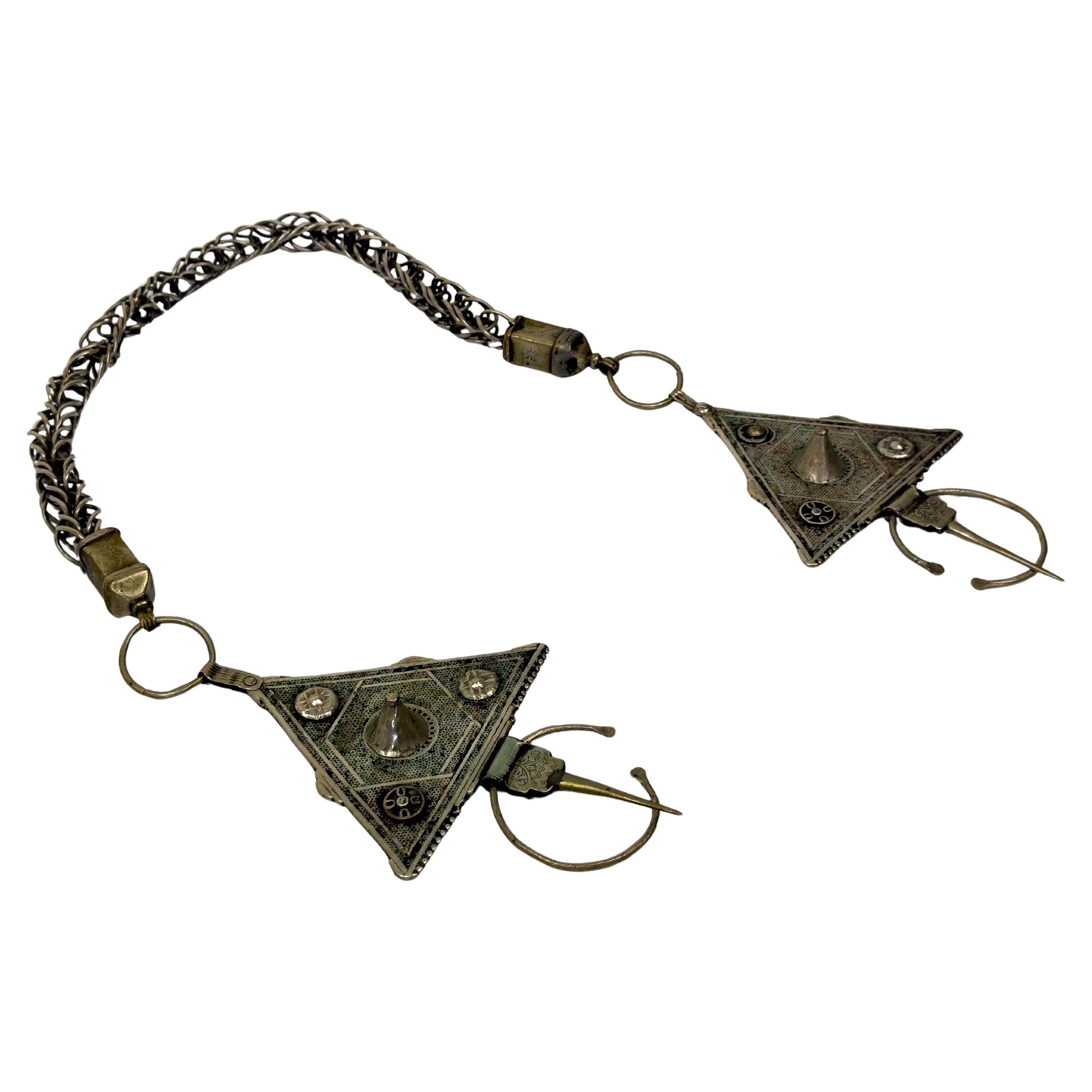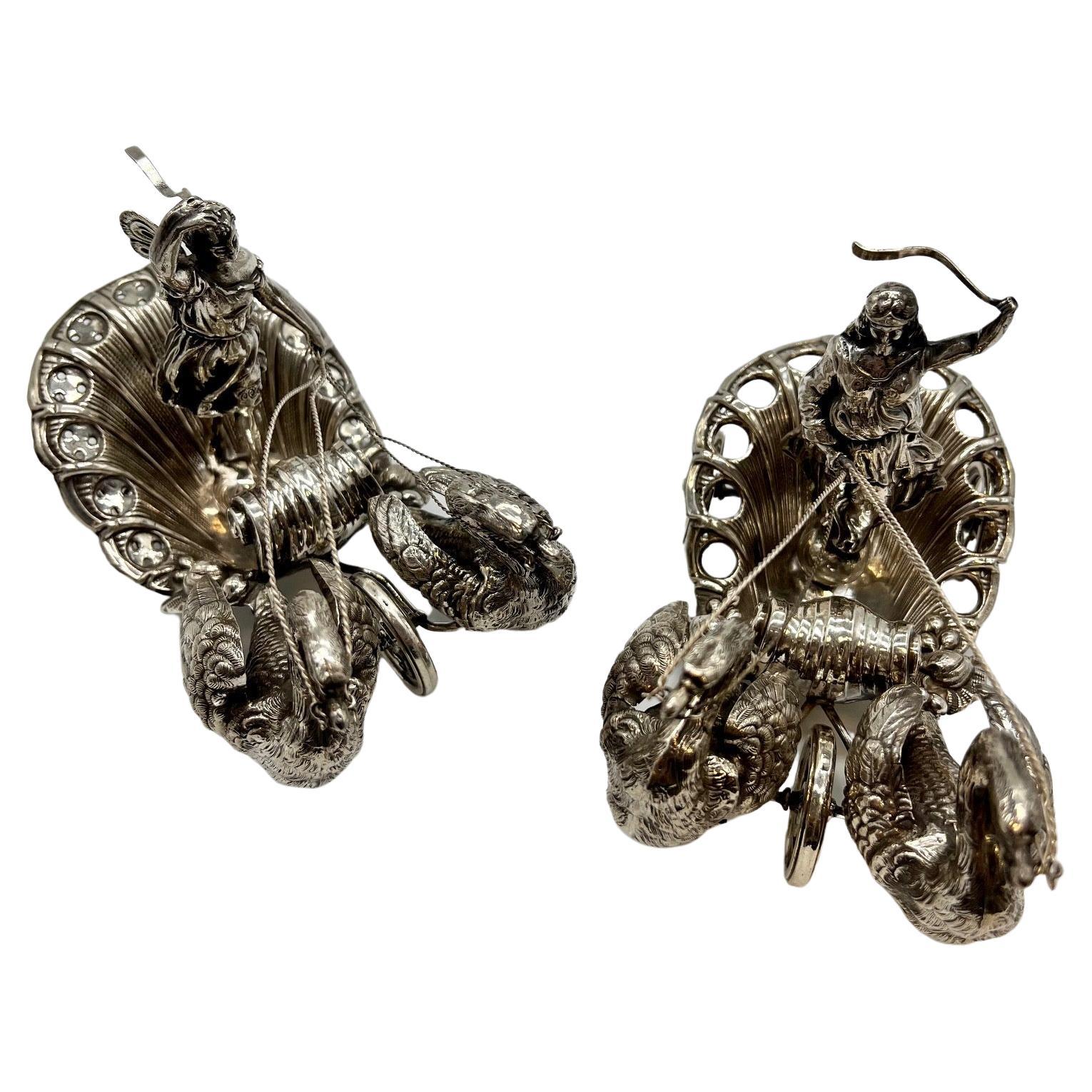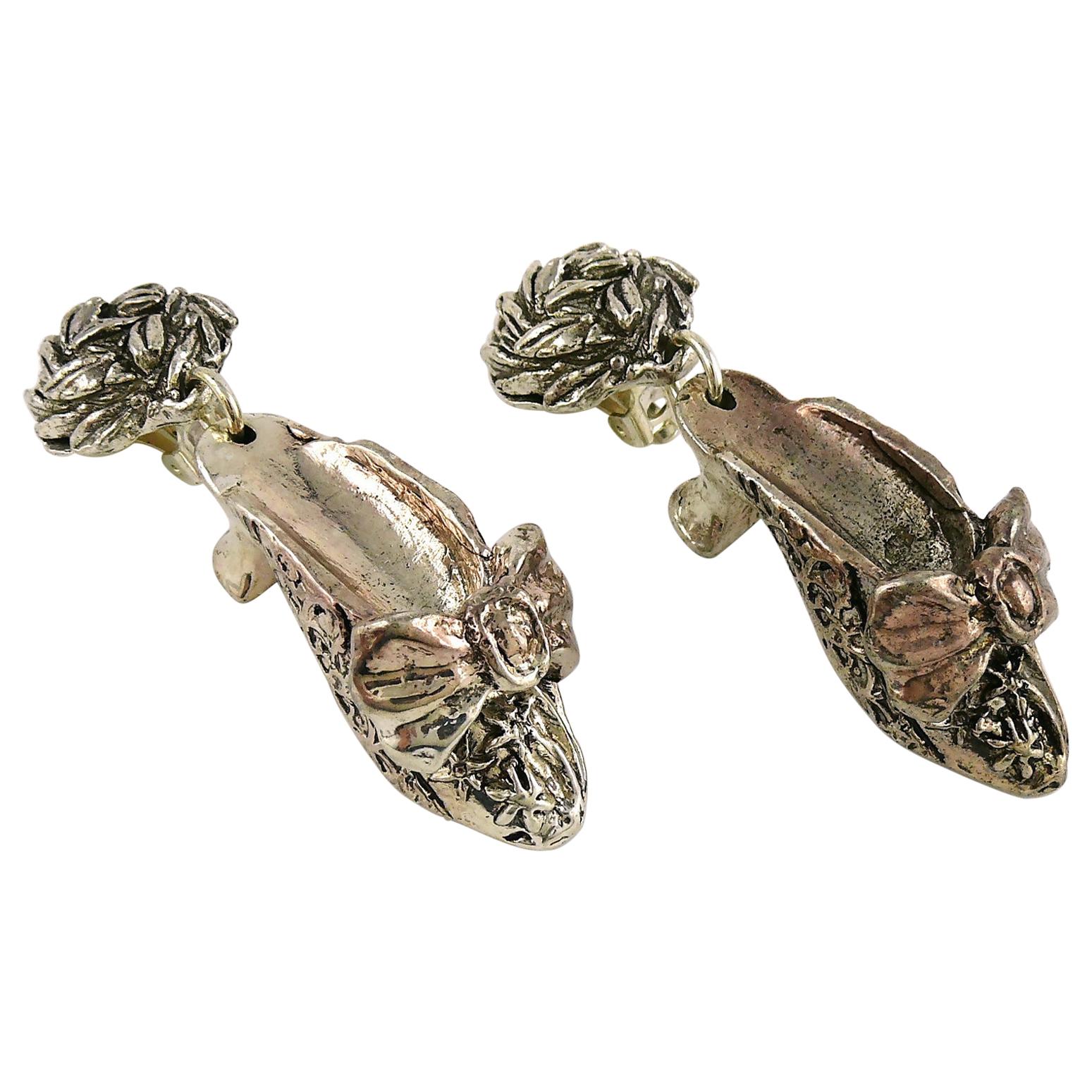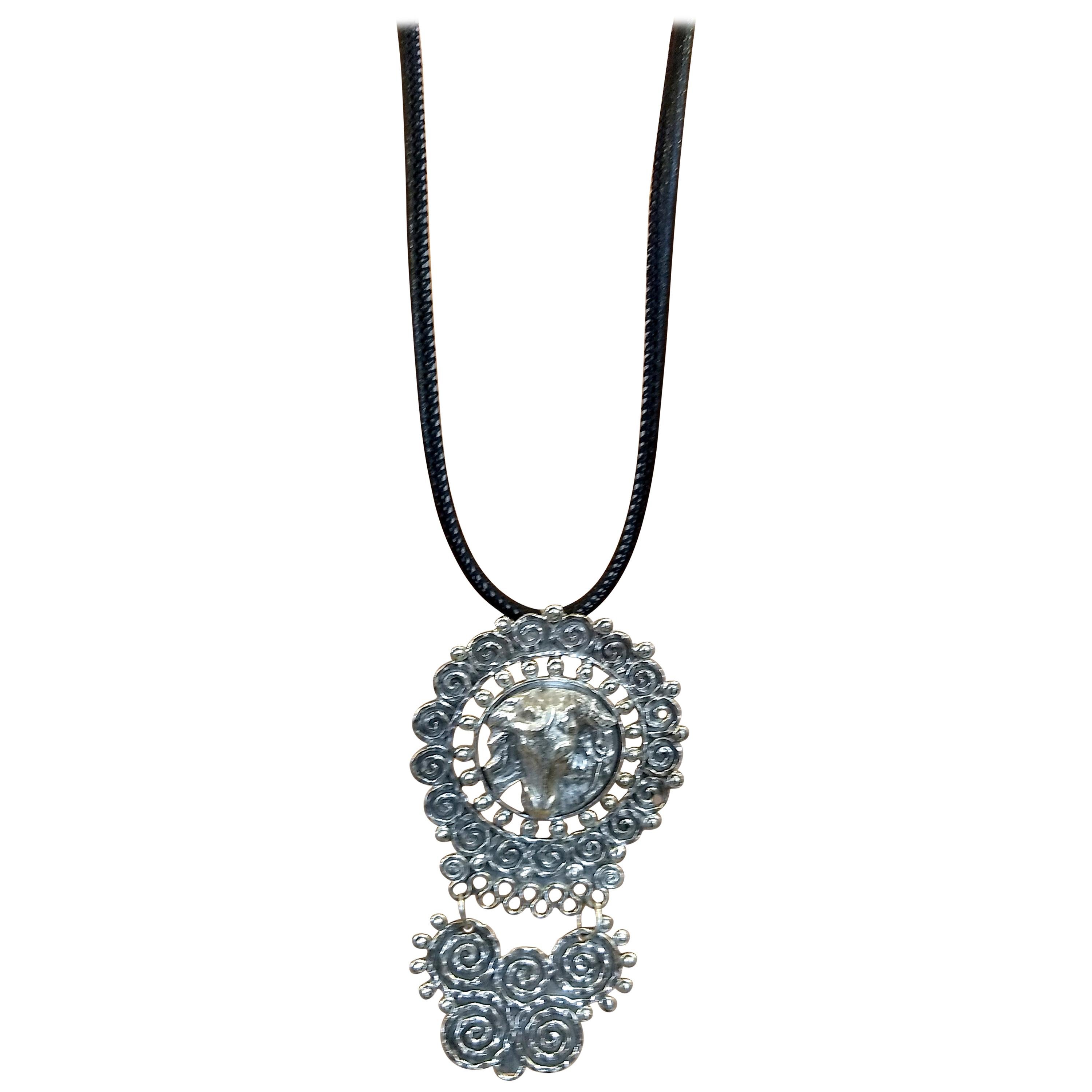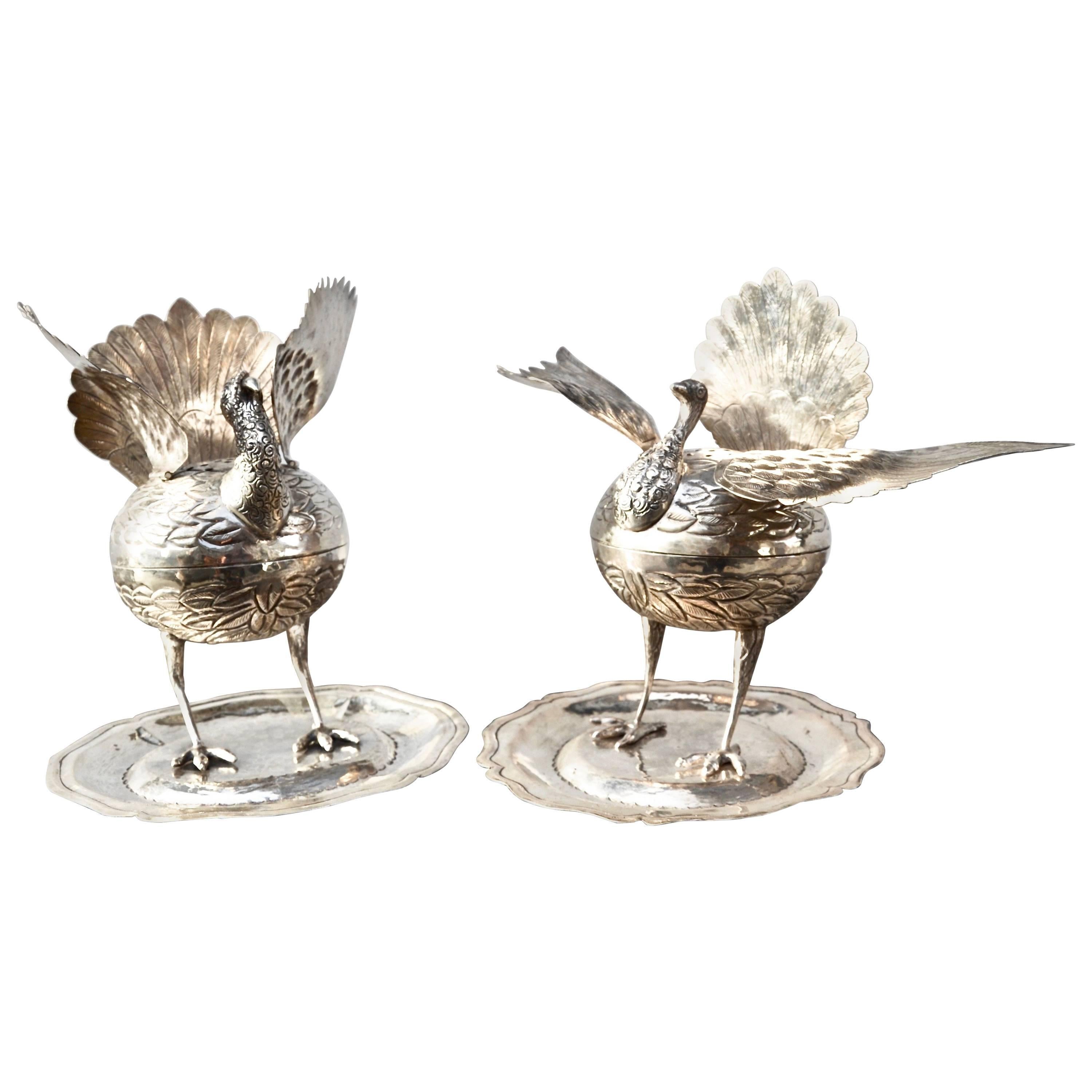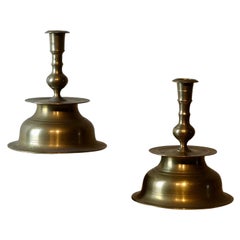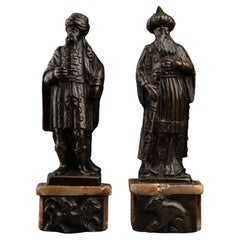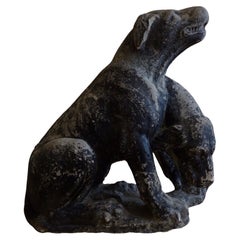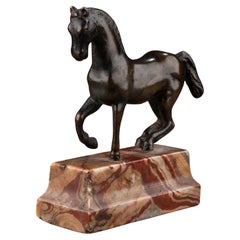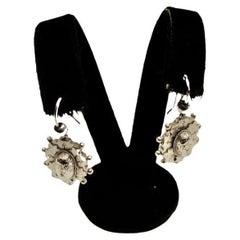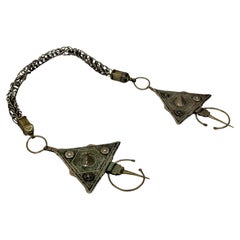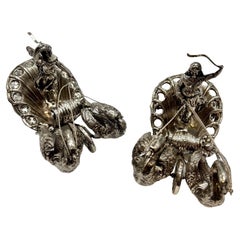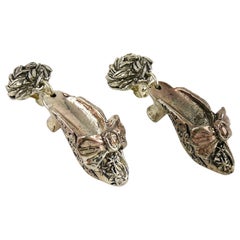Items Similar to Pair of Silver Amulets of Two Fantastic Animals, Naples, 18th-19th Century
Want more images or videos?
Request additional images or videos from the seller
1 of 7
Pair of Silver Amulets of Two Fantastic Animals, Naples, 18th-19th Century
$2,997.95per set
£2,230.17per set
€2,500per set
CA$4,105.22per set
A$4,564.44per set
CHF 2,383.30per set
MX$55,560.36per set
NOK 30,409.86per set
SEK 28,492.58per set
DKK 19,031.12per set
Shipping
Retrieving quote...The 1stDibs Promise:
Authenticity Guarantee,
Money-Back Guarantee,
24-Hour Cancellation
About the Item
Pair of silver amulets of two fantastic animals
Naples, late 18th- early 19th century
Silver, punches and the seal of the Kingdom of Naples
Measures: H 7 cm L 8,5 cm
With the chains 24 cm.
Amulets and talismans were the first ornaments in the history of humankind, worn not for vanity but for enjoying the signs of divine benevolence they brought the wearer. They are protective, propitiatory and curative pieces, characterized by their apotropaic functions of warding off evil influences, attracting positive ones and preserving therapeutic properties.
Those charms were considered “magical” jewellery telling of humankind’s primordial need to believe in a supernatural dimension for the governance of imponderable factors like health, luck and illness.
These chains were used to hang the amulets from the cribs of newly-born children because people tought that children were especially weak against the forces of the Evil Eye. The high infant mortality rate was more likely due to poor hygiene and diet, but it was attributed to the Evil Eye being cast on them by a jettatore. Jettatore is an Italian word of Neapolitan origin, and was used to refer to one who has the powers of the Evil Eye.
Those charms were mostly produced from the late 18th century up to the 19th century in Naples, South Italy, to ward off the negative powers of Evil Eye ans streghe (witches).
The amulets depict two fantastic animals: half-winged unicorn (or horse) and half fish with a pierced tail. The hippocampus is associated by analogy to mermaids and sea horses, an also assumes an apotropaic function. The silver was considered the metal of the moon goddess. The charms, with three bells each, bear the seals of the Kingdom of Naples.
Similar amulets in differents shapes can be found at the Victoria and Albert Museum and at the Museo del Gioiello di Vicenza.
- Dimensions:Height: 2.76 in (7 cm)Width: 3.35 in (8.5 cm)Depth: 0.2 in (5 mm)
- Sold As:Set of 2
- Style:Other (Of the Period)
- Materials and Techniques:
- Place of Origin:
- Period:
- Date of Manufacture:19th Century
- Condition:Wear consistent with age and use.
- Seller Location:Bruxelles, BE
- Reference Number:1stDibs: LU6666231019552
About the Seller
5.0
Vetted Professional Seller
Every seller passes strict standards for authenticity and reliability
1stDibs seller since 2022
15 sales on 1stDibs
Typical response time: 2 hours
- ShippingRetrieving quote...Shipping from: Bruxelles, Belgium
- Return Policy
Authenticity Guarantee
In the unlikely event there’s an issue with an item’s authenticity, contact us within 1 year for a full refund. DetailsMoney-Back Guarantee
If your item is not as described, is damaged in transit, or does not arrive, contact us within 7 days for a full refund. Details24-Hour Cancellation
You have a 24-hour grace period in which to reconsider your purchase, with no questions asked.Vetted Professional Sellers
Our world-class sellers must adhere to strict standards for service and quality, maintaining the integrity of our listings.Price-Match Guarantee
If you find that a seller listed the same item for a lower price elsewhere, we’ll match it.Trusted Global Delivery
Our best-in-class carrier network provides specialized shipping options worldwide, including custom delivery.More From This Seller
View AllPair of Chiseled Candlesticks
Located in Bruxelles, BE
Pair of chiseled candlesticks
plated brass
Germany, probably Nuremberg 17th century
H 12 x (base diameter) 9,5 cm
Very good conditions.
Category
Antique 17th Century German Baroque Chandeliers and Pendants
Materials
Brass
$1,439 Sale Price / set
20% Off
Two rare Figures in Turkish Attire - Venice, early 17th century
Located in Bruxelles, BE
Rare Bronzes Depicting two Figures in Turkish Attire
Possibly Suleiman the Magnificent at two different ages
bronzes, alabaster bases
Venice, early 17th century
19,5 x 6 x 5 cm
These two rare bronze statuettes represent two figures dressed in elaborate "Turkish" attire. They are mounted on alabaster bases with bronze reliefs—one featuring the winged lion of Venice, and the other possibly symbolizing Turkey with a wolf depiction.
One figure wears a grand külah, a spherical turban with a cone top, signifying royal authority, while the other has a wrapped turban, denoting rank and religious identity. Their garments are richly detailed with intricate engravings, suggesting luxurious fabrics of the Ottoman court.
The statuettes may represent Suleiman the Magnificent at two different stages of life, as both young and old. The sultan depicted alongside the winged lion corresponds to a description from a Venetian delegate in 1534, when Suleiman was 43. At that time, he had conquered Iraq from the Safavids and achieved a decisive victory over the Papal fleet at the Battle of Preveza. He was described as having large eyes, an aquiline nose, and long red mustaches—traits visible in Cristofano dell'Altissimo’s portrait of Suleiman in the Uffizi Gallery in Florence.
Unlike Mehmed II, who commissioned portraits by European artists for diplomatic purposes, Suleiman did not directly order such representations. Instead, his likeness spread through works by artists like Albrecht Dürer, based on sketches made by diplomats. Following his capture of Belgrade in 1521, his victory over Hungary in 1526, and his siege of Vienna...
Category
Antique 17th Century Italian Renaissance Figurative Sculptures
Materials
Alabaster, Bronze
Cerberus, Italy, 17th Century
Located in Bruxelles, BE
Cerberus
Black painted stone
Italy, 17th century
Measures: 80 x 69 x 36cm
(one head missing)
Cerberus, cruel monster, fierce and strange,
Through his wide threefold throat barks as a dog
Over the multitude immers'd beneath.
His eyes glare crimson, black his unctuous beard,
His belly large, and claw'd the hands, with which
He tears the spirits, flays them, and their limbs
Piecemeal disparts (Dante, Inferno, Canto VI).
Cerberus figure seated, in his role of ferocious guardian of the underworld; he shows a nervous musculature, an adherent skin which reveals the ribs, long and robust limbs; his heads are broad and the eyes set well apart.
Painted in black to amplify his menacing look, the infernal guardian is depicted with his famous attributes, writhing his heads, growling and barking furiously.
Cerberus, in Greek mythology, was the monstrous watchdog of the underworld – also known as the “hound of Hades” – preventing the dead from leaving, and making sure that those who entered never left.
A child of Typhon and Echidna, he was part of a monstrous family, which included Orthus, the Lernaean Hydra, and the Chimaera as well. Only on three occasions Cerberus was tricked by visitors of Hades: Heracles did it with his strength, Orpheus with his music.
In "The Inferno", Dante places Cerberus as the guardian of the third circle of Hell. With his three mouths, Dante saw Cerberus as a beast that was synonymous with the sin of Gluttony. Virgil gets past the monster by throwing mud in his three mouths, temporarily choking him.
Very rare are the representations of Cerberus in ancient statuary...
Category
Antique 17th Century Italian Renaissance Figurative Sculptures
Materials
Stone
$19,786 Sale Price
25% Off
Pacing Horse - Italian School, 18th century
Located in Bruxelles, BE
Italian School, 18th century
Pacing Horse
Bronze with brown patina, on a rectangular marble base
H 8 x L 8,5 x P 3 cm
H totale 11 cm
Category
Antique 18th Century Italian Baroque Animal Sculptures
Materials
Marble, Bronze
Renaissance Harpy - Italy, 16th century
Located in Bruxelles, BE
Renaissance Harpy
bronze
Italy, 16th century
15 x 12 x 5,5 cm
This expressive bronze figure represents a harpy, a mythological creature with the body of a bird and the head and tor...
Category
Antique 16th Century Italian Renaissance Figurative Sculptures
Materials
Bronze
Bronze salamander - 17th century
Located in Bruxelles, BE
Bronze salamander
Italy, 17th century
Patinated bronze
4 x 17 x 10 cm
This finely cast bronze salamander exemplifies the 17th-century fascination with naturalistic forms and animal ...
Category
Antique 17th Century Italian Renaissance Animal Sculptures
Materials
Bronze
You May Also Like
Pair of Victorian Silver Etruscan Style Earrings, circa 1880
Located in London, GB
Pair Of Victorian Silver Etruscan Style Earrings,Circa 1880
This pair are in excellent condition and typical of the period.
Category
Antique 1880s English Victorian Drop Earrings
Materials
Silver
A pair of silver fibulae from the Atlas Mountains of Morocco
Located in Amsterdam, NL
Atlas Mountains, Morocco, Early 20th century
The usage of the fibula, an ancient piece of jewelry that holds capes and other clothing in place, is unique to North African Berber cos...
Category
Early 20th Century Moroccan Collectible Jewelry
Materials
Silver
Pair of 20th Century German Silver Swan Drawn Chariot with Robed Driver Stamped
Located in North Miami, FL
Pair of 20th century German silver swan drawn chariot with robed driver stamped, marked "CD 900". Accompanied by a similar German silver swan drawn chariot with fairy driver, marked ...
Category
20th Century Russian Sterling Silver
Materials
Silver, Sterling Silver
CHANTAL THOMASS Vintage Novelty Silver Tone Shoe Dangling Earrings
By Chantal Thomass
Located in Nice, FR
CHANTAL THOMASS vintage novelty dangling earrings (clip-on) featuring antiqued silver tone resin shoes.
Embossed CHANTAL THOMASS.
Indicative measurements : height approx. 7.5 cm (2...
Category
20th Century French Clip-on Earrings
Two Beautiful "Matl-Salas" Sterling Pendants Depicting Horses Midcentury Mexico
By Ricardo Salas, Matilde Poulat
Located in Mexico, DF
Two beautiful pendants handcrafted in 925 sterling at Matilde Poulat and Ricardo Salas´s silversmith workshop probably during the 1950s, hallmarked "Matl-Salas Mexico 925". They depict each a detailed sculptured head of a horse surrounded by hand made silver spirals. Each displayed with a leather cord with a silver broach...
Category
Mid-20th Century Mexican Modern Collectible Jewelry
Materials
Sterling Silver
Pair of South American Perfume or Incense Burners in Silver
Located in Brussels, BE
Silver tested but not stamped.
Category
Antique Early 19th Century South American Sculptures and Carvings
Materials
Silver
More Ways To Browse
19th Century Italian Jewelry
Fantastic Antique Silver
Bells Collectable
Antique Amulet
Antique Bells Collectibles
Silver Amulet
Antique Albert Chain
Silver Mermaid
Antique Unicorn
Used Cribs
Antique Horse Ornament
Witch Jewelry
Horse Bells Antique
Antique Silver Albert Chain
Antique Mermaid Jewelry
Evil Eye Antique Charm
Hippocampus Horse
18th Century Crib
